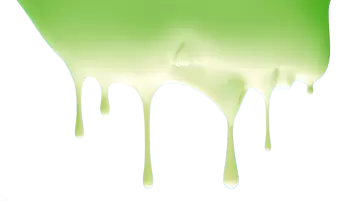This is page two of our overview of the 1883 Report on Haunted Houses by the Society for Psychical Research...details of their examinations into the cases of haunting.
Actual Investigations by the Society of Psychical Research Committee on Haunted Houses
After explaining investigative methods, the SPR committee then shares in their report numerous cases of haunting that they had investigated using the prescribed techniques along with their conclusions as to whether or not testimonies could be corroborated (something they found difficult, at times), noting any inconsistencies within details from the different sources, and sharing the details of the phenomena and any ghosts encountered by witnesses.
As an example of some of the description of ghost sounds and sightings SPR learned of, the following list of ghost phenonema was excerpted from the investigation of an anonymous, big, haunted house:
"We have, in this instance, audible testimony for the occurrence in a house where a murder had been committed of:
1. Noises of footsteps and bell-ringing, such as were commonly reported to be heard in houses of this description.
2. An apparition, noticed on the scene of the murder, and subsequently recognized from a portrait as bearing resemlance to the murderer.
3. Articulate sounds of appropriate significance, heard, again, on the anniversary and on the scene of the murder, by another witness who was entirely ignorant of the facts."
From the SPR cases shared in the first report, and even from the above descriptions, we learn that people in the past, even from over a century ago, had similar experiences with haunting as those of us, today. The descriptions of encounters with ghosts, how they look, sound and behave, have remained consistent over time.
More Ghost Activity Details and Thoughts About Haunted Houses
The following is another list of haunted house activity from a different SPR case referenced only as by "Miss H." along with some of the summary from the committee as to how multiple testimonies from several witnesses can provide compelling support for the validity of haunting when viewed objectively:
"It would appear in this case that in a house which bore the reputation of being haunted:
1. Certain unaccountable noises were occasionally heard.
2. A shadowy figure was seen at various times, by at least six witnesses: and as these witnesses in most cases affirm that they at first took the object seen to be a living person, their apparent visions cannot be referred to any state of expectancy, produced by their knowledge of the supposed haunting - unless we attribute to them a coincidence of misinterpretation on this important point.
3. There are some grounds for connecting this figure with the lady whose spirit was supposed to 'haunt' the house.
...we would, to a certain extent, anticipate criticism by pointing out here...what we consider the weakest points of the case. In the first place, then, though the figure is said to have been seen by so many persons, it was never seen by two persons simultaneously. Nor was it ever seen under such circumstances, and in such light, that its features could be clearly recognized. And, undoubtedly, some of the evidence for its appearance is very weak...for example, being quite possibly a mere illusion of the senses, the imagination having been previously excited by hearing of the ghost in the house. In fact, any piece of the evidence standing by itself might be ingeniously explained away, though it is difficult to see how this can be done with the spontaneous and independent testimony of several creditable witnesses. It is not a chain of evidence which breaks down if the weakest link gives way, but rather a rope, the strength of which is to be judged as a whole, and not from the weakness of any particular fibre...it is only when the various bits of testimony are put side by side that their real significance can be appreciated."
Some Final Thoughts
The remainder of the SPR committee's report along with accounts of haunting that precede it show a distinction between the late 1800s culture (when the Society for Psychical Research began) and today. Investigators from that early committee of haunted houses found it challenging, during their day, to get people to speak openly about their real ghost stories, and owners of residences were often unwilling to admit their homes were haunted. We must understand that it wasn't culturally acceptable to do so. This social pressure of remaining secretive about ghosts and haunting is consistent with the culture of that day that promoted being reserved and respectable - even thoughSpiritualism, spirit photography, and psychic mediums were quickly becoming popular. Eventually, a cultural shift took place in the early to mid-1900s, when extrovertism began being promoted by advertisers and marketers over introvertism as a way to advance in business.
Eventually, extrovertism took over Western societies, especially in the United States, so much so, that people now believe that self-promotion is desirable and, unfortunately, normal, causing introverts to often feel inferior. But for paranormal investigation this is advantageous. Today, it is much easier to find people who want to share their encounters with ghosts or even allow media to openly investigate their homes like we see on "reality television" (much of which is not real or, in the very least, embellished by production companies for profits). So, for modern-day ghost investigators, the opportunities are far greater for investigation, validation and corroboration of witness testimony and, especially, experimentation.

